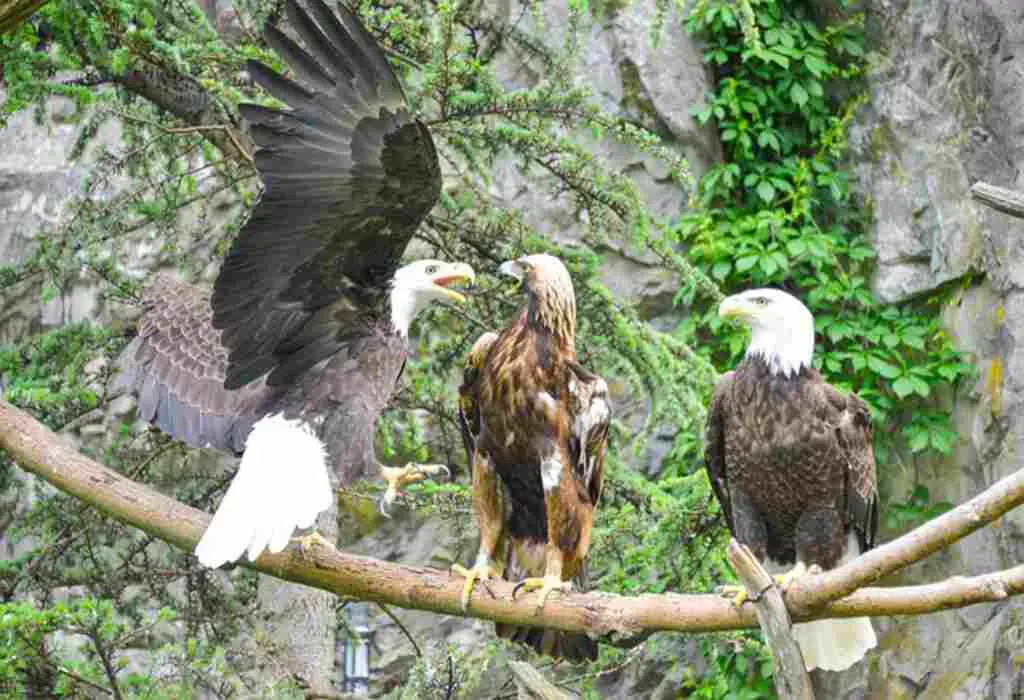As one of the most majestic and powerful birds in the world, the eagle is often associated with strength, freedom, and dominance. However, despite its impressive qualities, the eagle is not invincible.
There are birds, known as predator birds, that pose a threat to the eagle’s survival. But which bird has the ability to defeat this regal bird of prey?
In this article, we will explore the fascinating world of avian predators and their interactions with eagles.
We’ll take a closer look at eagle predators, including their strategies and success rates, and showcase the bird species known to have the ability to defeat an eagle in combat.
We’ll also examine the defense mechanisms that eagles possess to protect themselves against their adversaries and highlight extraordinary stories of eagle encounters.
So, if you’ve ever wondered what bird can kill an eagle, stick with us as we unravel this intriguing mystery.
Table of Contents
- 1 Key Takeaways
- 2 What Bird Can Kill An Eagle
- 3 Understanding the World of Avian Predators
- 4 Eagle Predators: A Closer Look
- 5 Birds that Can Defeat an Eagle
- 6 Natural Enemies of the Eagle
- 7 The Looming Threat: Bird vs. Eagle
- 8 The Survival Game: Eagle’s Defense Mechanisms
- 9 The Intricate Balance of Nature
- 10 Rare Encounters: Noteworthy Stories
- 11 Eagle vs Bird: Who Will Prevail?
- 12 The Circle of Life: Understanding the Larger Picture
- 13 Conclusion
- 14 FAQ: What Bird Can Kill An Eagle?
- 15 Author
Key Takeaways
- Some birds can pose a threat to eagles due to their size, strength, or hunting prowess.
- Predators like large hawks, falcons, and other eagles may attempt to kill or compete with eagles.
- Environmental factors and territorial disputes can also lead to conflicts among birds of prey.
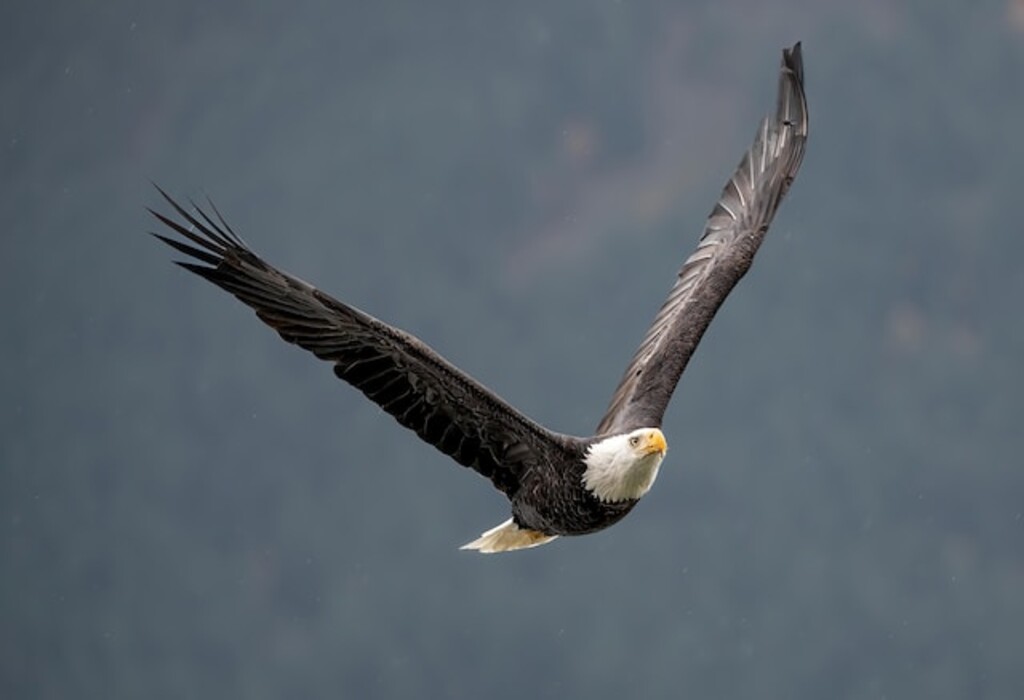
What Bird Can Kill An Eagle
While eagles are formidable predators, they face challenges from larger birds like hawks, falcons, and other eagle species. Territorial disputes and competition for resources can lead to clashes among birds of prey. Although rare, instances of eagles being killed by other birds do occur in the natural world.
Understanding the World of Avian Predators
Before delving into the specifics of eagle predators, it’s important to understand the characteristics and hunting techniques of avian predators as a whole.
Birds of prey, also known as raptors, are characterized by their sharp talons, hooked beaks, and keen eyesight. These adaptations enable them to catch and kill prey in a swift and efficient manner.
There are several types of birds of prey, including hawks, falcons, owls, and eagles. Each species has unique qualities that make them exceptional hunters.
For example, falcons are known for their incredible speed and agility, while owls use their silent flight and exceptional hearing to locate prey.
Most avian predators hunt during the day, using their keen eyesight to locate prey from above. However, some species, such as owls, are nocturnal and hunt at night.
They rely on their acute hearing and exceptional night vision to catch prey in the darkness.
Raptors are found in diverse habitats, ranging from forests and mountains to deserts and grasslands. Some species, such as the bald eagle, live near bodies of water, where they feed on fish.
Others, like the peregrine falcon, are adapted to urban environments and can be found nesting on skyscrapers.
Despite their hunting prowess, raptors face challenges in the form of habitat loss and human encroachment.
Nevertheless, these birds of prey continue to play a critical role in controlling populations of small mammals and maintaining the balance of ecosystems.
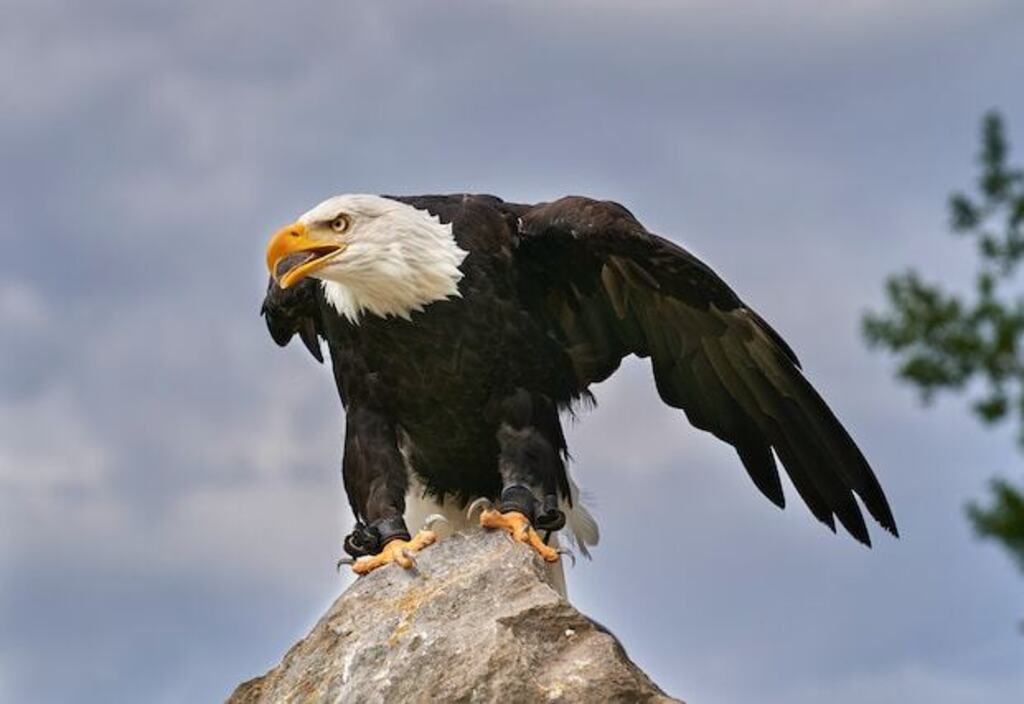
Eagle Predators: A Closer Look
Eagles are impressive predators, but they are not invincible. Several birds of prey have been known to target and attack eagles, with varying degrees of success. Below are some of the most prominent eagle predators:
| Bird | Size | Habitat | Prey |
|---|---|---|---|
| Golden eagle | Up to 3 feet tall, with a wingspan of up to 7 feet | Open areas, such as mountains, deserts, and grasslands | Preys on rabbits, hares, and small mammals, but has been known to attack eagles, especially young and inexperienced ones. |
| Gyrfalcon | Up to 2 feet tall, with a wingspan of up to 4 feet | Arctic regions and tundras | Preys on smaller birds, such as ptarmigans and grouse, but can also take down eagles, especially those that are weakened or injured. |
| Peregrine falcon | Up to 1.5 feet tall, with a wingspan of up to 3.5 feet | Coastal areas and cliffs | Preys on smaller birds, such as pigeons and doves, but has been known to attack eagles, especially during migration season or when food is scarce. |
While these birds of prey pose a threat to eagles, it is important to note that they do not always succeed in their attacks.
Eagles are powerful predators with sharp talons and beaks, and they are often able to defend themselves against their adversaries.
Additionally, eagles have the advantage of superior size and strength, which can make it difficult for smaller birds of prey to overpower them.
Notable Incidents of Eagle Attacks
Despite their formidable defenses, eagles do occasionally fall prey to predator birds. One such incident occurred in 2019 in Ontario, Canada, where a golden eagle was found dead with talon marks consistent with a peregrine falcon attack.
Another notable attack occurred in 2018 in Scotland, where a white-tailed eagle was found with injuries consistent with a golden eagle attack.
While these incidents are relatively rare, they highlight the fact that eagles are not immune to predation.
Birds that Can Defeat an Eagle
Eagles are majestic creatures, but they are not invincible. Certain birds, with their unique adaptations and specialized hunting techniques, have been known to defeat them in combat. Here are some of the birds that can defeat an eagle:
| Bird | Size | Strengths |
|---|---|---|
| Golden eagle | Similar to an eagle | Impressive strength and talons |
| Harpy eagle | Similar to an eagle | Powerful hunting tactics and talons |
| Peregrine falcon | Smaller than an eagle | Blazing speed and agility |
| Aquila chrysaetos | Larger than an eagle | Exceptionally strong talons and hunting skills |
These predators, with their unique skills and strengths, can pose a significant threat to eagles. However, eagles are also known for their exceptional hunting abilities and are not easily defeated.
It is important to remember that in nature, all animals have their place in the food chain and contribute to the balance of the ecosystem.

Natural Enemies of the Eagle
Despite their majestic appearance and impressive hunting skills, eagles have several natural enemies that pose a significant threat to their survival. These predators come from different animal kingdoms and have unique methods of targeting eagles.
One of the most common and formidable natural enemies of the eagle is the snake.
While not typically thought of as a bird predator, certain snake species have been known to take down eagles with their venomous bites.
Eagles often prey on snakes, and these interactions can sometimes result in the eagle becoming the victim.
Another predator that poses a threat to eagles is the bobcat. These agile and powerful felines can climb trees and ambush eagles in their nests, preying on both young and adult eagles.
Additionally, large carnivores such as bears and wolves have been known to attack eagles when their natural prey is scarce.
Other bird species also prey on eagles. Great horned owls have been documented attacking and killing eaglets in their nests.
Falcons, hawks, and even smaller birds like crows have also been observed harassing and attacking eagles.
In some cases, a group of birds may work together to distract and overwhelm the eagle, making it easier for one bird to go in for the kill.
While these predators may sound daunting, it’s important to note that they play a vital role in maintaining the balance of ecosystems.
Without these natural enemies, the populations of eagles and other prey species could grow unchecked, potentially causing ecological imbalances.
The Looming Threat: Bird vs. Eagle
Birds have been known to pose a significant threat to eagles, especially when competing for resources such as food and nesting sites. These encounters can result in fierce battles, each trying to establish their dominance over the other.
The outcome of these battles often depends on a variety of factors, including the size and strength of the birds involved, their hunting techniques, and overall agility.
Battles in Nature
Some of the most noteworthy battles in nature involve eagles and their avian adversaries. For example, the Harpy Eagle, a fierce predator found in Central and South America, has been known to attack and kill other birds of prey, including eagles.
Another notable battle involved a Golden Eagle and a Red-tailed Hawk, caught on camera by a nature enthusiast. The two birds engaged in an intense aerial battle, with the eagle ultimately emerging as the victor.
Eagle vs Bird: Who Will Prevail?
When eagles and other birds clash, the outcome is not always straightforward. For instance, smaller birds like kestrels and falcons are known for their agility and aerial maneuvers, making them formidable opponents for larger birds like eagles.
However, eagles have powerful talons that give them a significant advantage in close combat.
Ultimately, the outcome of these battles is determined by a combination of factors.
While an eagle may be larger and stronger, it may struggle against a particularly agile adversary with a unique hunting technique.
Conversely, smaller birds may prove no match for the powerful talons and impressive strength of an eagle.
Regardless of who emerges as the victor, these battles highlight the complex predator-prey relationships in nature and the crucial role they play in maintaining the delicate balance of ecosystems.
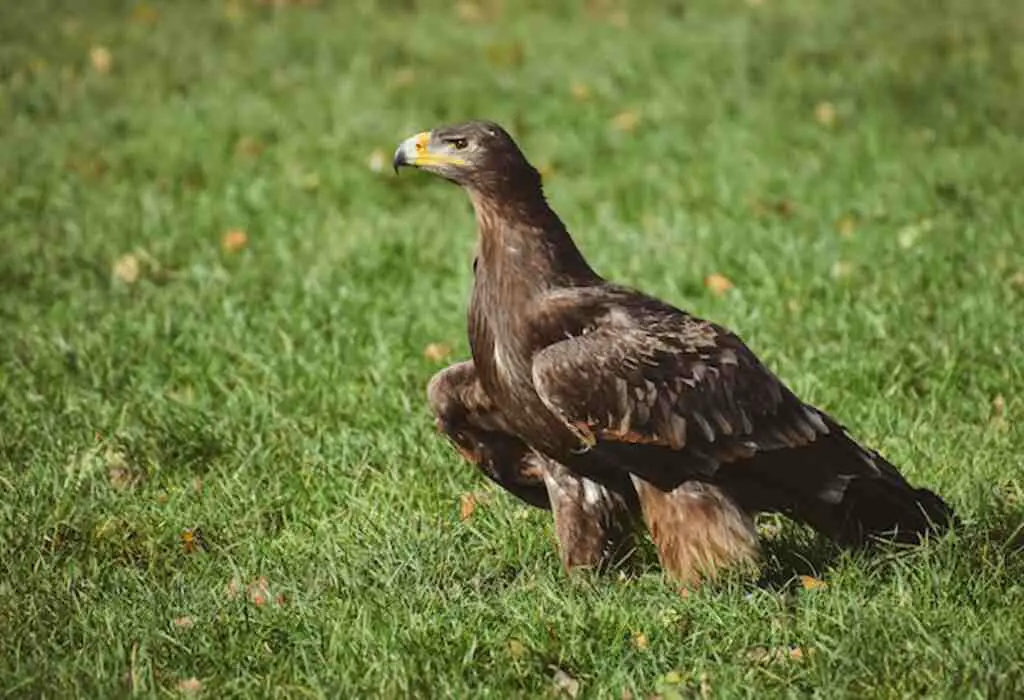
The Survival Game: Eagle’s Defense Mechanisms
As apex predators, eagles have evolved an impressive array of defense mechanisms to protect themselves against predator birds.
These skills and techniques enable them to survive in their natural habitats, where they are constantly facing threats from other birds.
Eagles possess exceptional eyesight that allows them to detect predators from a distance and take evasive action.
Being able to spot predators from afar is a critical defensive skill that gives them a head start in avoiding attacks.
In addition to their keen sense of sight, eagles possess incredible talon strength that allows them to grapple with their adversaries.
Their talons are powerful enough to leave serious injuries on predators and defend themselves against attacks.
Eagles are also capable of an impressive range of aerial maneuvers, including soaring, diving, and banking, which can help throw off would-be predators.
“Eagles have an impressive array of defense mechanisms to protect themselves against predator birds.”
Lastly, eagles are capable of emitting a loud, piercing scream that can stun their opponents and even deter them from attacking altogether.
Although their scream is not a physical defensive skill, it is an effective way of intimidating predators and avoiding confrontations.
The Intricate Balance of Nature
The world of predators and prey is a complex and delicate ecosystem, where every species has a unique role to play. Eagles, as apex predators, play a critical part in maintaining ecosystem balance.
Their hunting prowess helps control populations of smaller prey, preventing them from overgrazing on vegetation and causing ecological imbalances.
Eagles also serve as a source of food for other predators, such as wolves and cougars, thereby contributing to the food chain’s stability.
Their role in nature is so significant that even small changes in their populations can have far-reaching environmental impacts.
However, eagles are not immune to threats from predators, such as bears, coyotes, and wolves, who occasionally prey on them.
While these attacks are rare, they serve as a reminder that even the mighty eagle is not invincible in nature’s grand scheme.
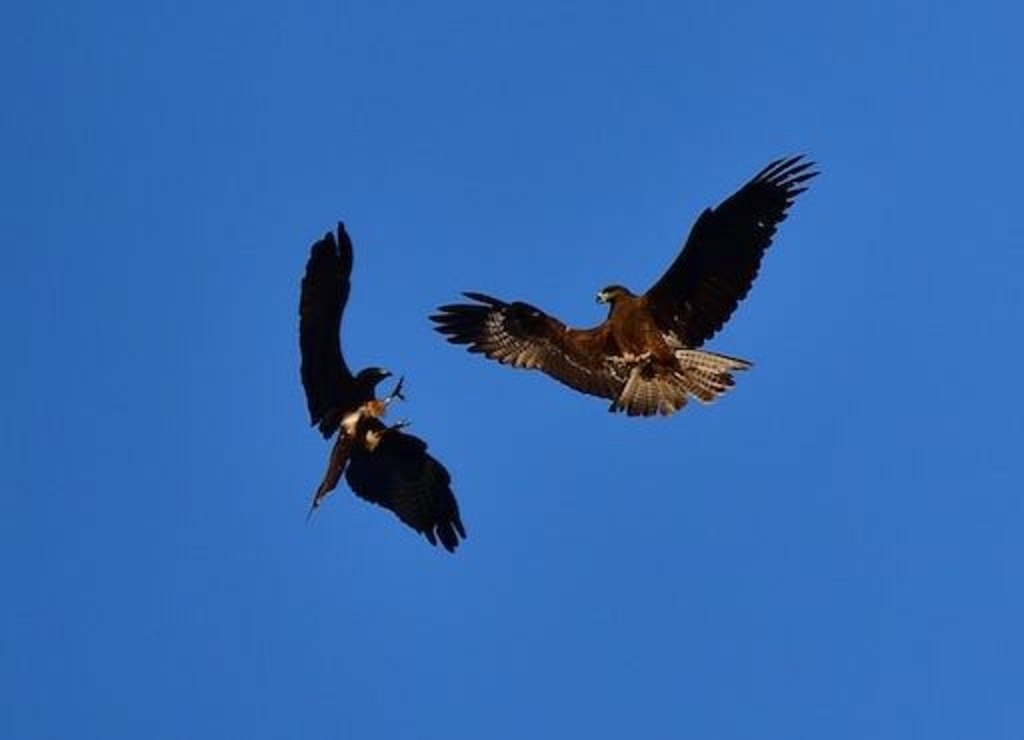
Rare Encounters: Noteworthy Stories
Eagles have a reputation for being formidable predators, but they’re not invincible. Over the years, there have been some incredible stories of eagles facing off against their natural enemies.
Here are a few noteworthy encounters that have been documented:
| Eagle vs. Peregrine Falcon | Eagle vs. Osprey | Eagle vs. Harpy Eagle |
|---|---|---|
| One remarkable encounter involved an eagle attacking a peregrine falcon. Despite the falcon’s impressive speed and agility, the eagle was able to quickly overpower it with its size and strength. | In another incident, an eagle and an osprey engaged in a fierce battle over a fish. The osprey used its sharp talons to try to defend its catch, but the eagle ultimately prevailed, snatching the fish from its rival’s grasp. | Perhaps the most epic battle involving an eagle was between a bald eagle and a harpy eagle. These two massive birds of prey engaged in a brutal struggle, with the harpy eagle using its powerful talons to try to subdue the bald eagle. In the end, the bald eagle emerged victorious, but not without sustaining some injuries. |
These rare encounters highlight just how dynamic and unpredictable nature can be. While eagles are among the most dominant birds of prey in the world, they still face formidable challenges from other predators.
In the next section, we’ll examine some of the battles between eagles and other birds in greater detail, exploring the factors that determine the outcome.
Eagle vs Bird: Who Will Prevail?
When it comes to battles in nature, the eagle is often viewed as a fierce and unbeatable predator. However, there are certain bird species that have the ability to challenge the eagle’s dominance. Let’s take a closer look at some possible scenarios of eagle vs. bird clashes:
Eagle vs. Falcon
One of the most iconic bird battles is the clash between the eagle and the falcon. Falcons are known for their incredible speed and agility, which can make them a formidable foe for eagles.
However, eagles are much larger and have a greater wingspan, which can give them an advantage in a physical confrontation.
In general, the outcome of an eagle vs. falcon encounter will depend on the individual birds’ size, strength, and hunting techniques.
Eagle vs. Owl
Another bird that can challenge the eagle is the owl. Owls have sharp talons and powerful beaks, which can cause significant damage to an eagle in a fight.
However, eagles are much larger and have greater physical strength, which can give them an advantage in a confrontation.
Moreover, eagles are diurnal, meaning they hunt during the day, while owls are nocturnal, hunting at night. Therefore, the chances of a direct confrontation between these two species are relatively low.
Eagle vs. Vulture
Vultures are scavengers that feed on carrion, but they can also be predators, attacking smaller animals like rabbits and rodents.
While vultures are not typically viewed as a threat to eagles, they have been known to attack and harass eagles that come too close to their nests.
In such cases, eagles can defend themselves using their talons and beaks, but the outcome of a fight will depend on the individual birds’ size and strength.
In conclusion, while the eagle is a dominant and powerful bird of prey, there are other bird species that can challenge its dominance in a direct confrontation.
The outcome of an eagle vs. bird battle will depend on various factors, including size, strength, and hunting techniques.
Ultimately, nature’s balance is maintained through these dynamic predator-prey relationships, each species playing a vital role in the ecosystem.
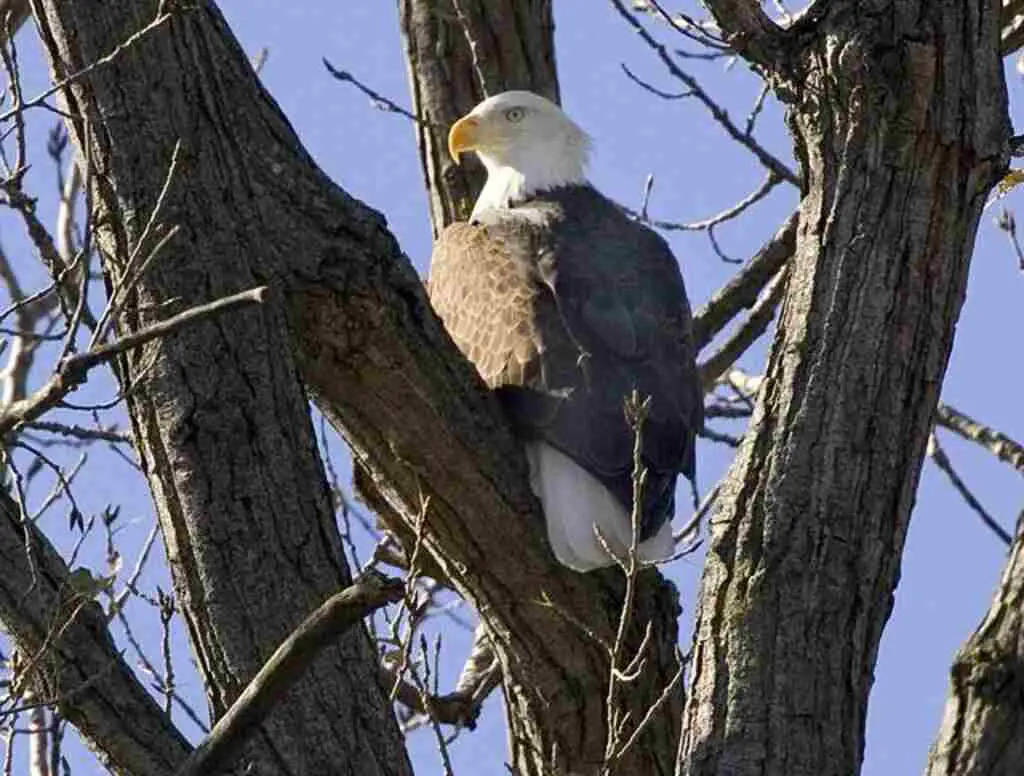
The Circle of Life: Understanding the Larger Picture
Eagles are apex predators and play a crucial role in maintaining the balance of ecosystems. As top predators, they regulate the population of their prey, preventing overgrazing and maintaining healthy vegetation.
Their presence also keeps other predator populations in check, as competition for food resources increases when the number of eagles declines.
Without eagles, the populations of their prey, such as small mammals, fish, and other birds, may explode, leading to an ecological imbalance.
This imbalance can ultimately affect the survival of other species, including humans.
The loss of eagles can also have direct impacts on human populations. Many cultures worldwide have revered eagles, incorporating them into their mythology and traditions.
Eagles are also used as symbols on national emblems and flags, highlighting their cultural and economic significance.
Furthermore, eagles are an essential part of the food chain, and the loss of their predation can lead to a cascading effect on other species.
For example, if eagles were to disappear, populations of their prey, such as small mammals, fish, and other birds, could increase significantly.
This could lead to overgrazing and the depletion of vegetation, which would then drive other species to extinction, too.
In conclusion, eagles are not only majestic and awe-inspiring creatures, but they also play a vital role in the health and balance of ecosystems.
It is crucial to preserve their populations and recognize their importance in the circle of life.
Conclusion
In the avian world, the competition for survival is fierce, and even majestic eagles are not exempt from potential threats.
While eagles are powerful hunters, they can face adversaries among other large birds, especially during territorial disputes or when competing for resources.
These interactions serve as a reminder of the intricacies of nature and the constant struggle for survival that shapes the behavior and dynamics of our feathered friends in the skies above. 🦅🐦
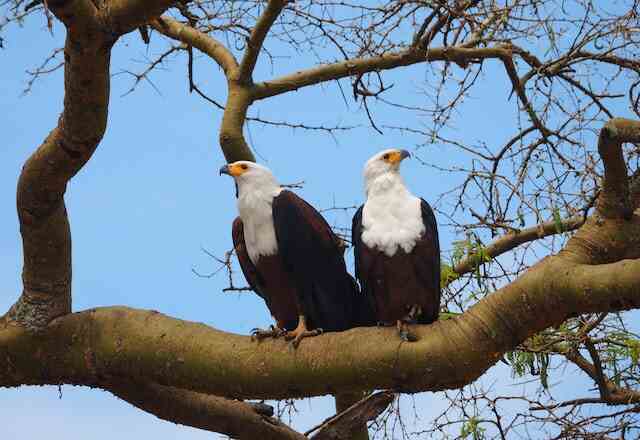
FAQ: What Bird Can Kill An Eagle?
Are there birds that can kill eagles?
Yes, in the wild, some birds pose a threat to eagles due to their size, strength, and hunting abilities. Large hawks, such as the Harpy Eagle, and powerful falcons are known to challenge and potentially kill eagles in territorial disputes or when competing for food.
What birds are potential eagle predators?
Potential eagle predators include large hawks like the Harpy Eagle, Goshawks, and some falcon species. Additionally, other eagle species, such as the Golden Eagle, may occasionally engage in conflicts with their counterparts over resources or territories.
Do eagles face dangers from other birds in the wild?
Yes, eagles face dangers from other birds, especially during territorial disputes and when resources like prey or nesting sites are limited. Conflicts with other large birds of prey can lead to intense aerial battles and, in rare cases, fatal outcomes for the involved eagles.
How often do eagles get killed by other birds?
While eagle killings by other birds are relatively uncommon, they do occur in specific situations. These incidents are more likely when there are resource shortages or when eagles encroach on the territories of larger or more aggressive birds.
What factors contribute to conflicts among birds of prey?
Conflicts among birds of prey, including eagles, can arise due to various factors. Limited food availability, territorial boundaries, and the need to defend nesting sites can all trigger aggressive encounters between different bird species. These conflicts are a natural part of the intricate ecosystem in which these majestic birds coexist.
Disclaimer: The interactions between birds of prey are complex and can vary depending on environmental conditions and individual circumstances. 🦅🐦

